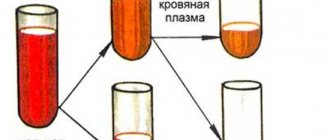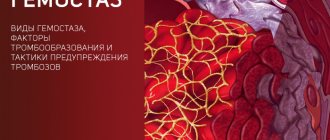Indications for the study
Analysis for OZhSS
, as a rule, are prescribed in conjunction with other laboratory tests to determine the amount of a microelement and evaluate its relationship with proteins. The results obtained make it possible to identify iron deficiency or excess and establish the exact cause of anemia.
The test is carried out in the following cases:
- symptoms of iron excess or deficiency;
- identified deviations from normal values in the results of the UAC;
- monitoring the progress of treatment.
Microelement deficiency does not manifest itself in any way over a long period of time. First of all, symptoms such as dizziness, weakness, and headaches appear. With a significant lack of iron, shortness of breath and pain in the chest appear. Unconventional food preferences may appear. When there is an excess of a microelement, symptoms such as cardiac dysfunction, pain in the abdomen or in the joint area appear.
Total iron-binding capacity of blood serum
The total iron binding capacity of serum is an indicator that reflects the maximum amount of iron that can bind transferrin.
The process of iron intake and its transfer through the bloodstream in the body is quite complex. The main share of iron enters the body with food. This element is necessary for the construction of hemoglobin. This substance is part of red blood cells, responsible for the transfer of oxygen from the lungs to the tissues. Iron also makes up the muscle protein myoglobin. For the proper functioning of iron-dependent mechanisms, not only its consumption, but also its transfer must be established. So, in the intestines, iron received from outside is absorbed into the blood. It is then captured by a special protein - transferrin. Transferrin
is the main transporter of iron. Normally, only ½ of the total transferrin binds to iron. The remaining part remains untouched, reserve. If there is not enough iron in the body, then most of the transferrin remains free, because at the same time its production is enhanced in order to better bind to a small amount of iron. This is the body's compensatory reaction to a lack of nutrients. Conversely, when there is an excess of iron, it is absorbed by a large amount of transferrin, so there is less free transferrin in the blood.
To determine how correctly the connection of iron with transferrin occurs, so much iron is added to the blood serum so that it binds not with ½ transferrin, but with all of the available transferrin. That is, they achieve maximum transferrin loading. Next, they estimate how much iron was needed for this. This way we can guess how much free transferrin is in the blood. This allows us to draw a conclusion about the level of iron, as well as assess the binding capacity of blood serum
. After all, even with normal iron levels, its uptake by transferrin can be impaired. This can occur in liver diseases, since transferrin is synthesized by liver cells.
It should be noted that the concentration of iron in the blood may vary throughout the day, but the binding capacity of the blood does not change. This allows you to most clearly assess blood iron saturation.
This study is most often used in the complex diagnosis of disorders of iron metabolism in the blood. Additionally, tests such as assessing the level of transferrin, ferritin, and iron levels in the blood may be prescribed. The assessment of the life-saving blood value is the most stable indicator that reflects the circulation of iron in the blood without errors due to nutrition during the day.
Interpretation of results
The following reference values have been established for THC: 45.3-77.1 µmol/l. Interpretation of the results of this test is carried out taking into account data from other laboratory tests. Only a doctor can properly evaluate them; self-diagnosis and self-medication are unacceptable. An elevated reading usually indicates anemia. It may be caused by low levels of meat in the diet or significant blood loss. An increase in PVSS may also be observed in patients with acute hepatitis. In late pregnancy, an increase in levels is caused by an increase in the need for iron.
If the test results are below normal, this may indicate various diseases (for example, tuberculosis, rheumatoid arthritis). To establish an accurate diagnosis in most cases, a comprehensive examination is required.
Total iron binding capacity (TIBC)
Total iron binding capacity (IBC)
) is an indicator used to diagnose the amount of iron that the blood can carry. An increase in the level of iron-binding capacity indicates a low level of iron in the blood and is characteristic of iron deficiency anemia, which is caused by chronic blood loss, lack of iron in the diet, as well as impaired absorption in the gastrointestinal tract. Sometimes an increase in iron-binding capacity is observed in acute hepatitis.
The total iron-binding capacity of blood serum (TIBC) is the sum of serum iron and NIBC (TIBC). Determination of blood serum PVSS and LVSS (LVSS) is used in the diagnosis of anemia.
The iron-binding capacity of serum changes with disorders of iron metabolism. In iron deficiency anemia, the PVSS and LVSS increase, and the saturation of transferrin with iron decreases to 15% and below. Low values of serum iron, combined with low values of PVSS and NSSS, are characteristic of anemia associated with chronic diseases, malignant tumors, infections (for the differential diagnosis of anemia in these cases, the determination of ferritin is also important). Instead of determining the iron-binding capacity of serum, the determination of transferrin content in serum can be used for the same purposes.
Iron
- is an important trace element in the human body. It is part of hemoglobin, which fills red blood cells and allows them to transport oxygen from the lungs to organs and tissues. Iron is part of the muscle protein myoglobin and some enzymes. It is absorbed from food and then transported throughout the body by transferrin, a special protein that is formed in the liver.
Normally, the body contains 4–5 g of iron, about 3–4 mg (0.1% of the total amount in the body) circulates in the blood “in conjunction” with transferrin. The amount of transferrin depends on the functioning of the liver and the person’s diet. Normally, 1/3 of the transferrin binding centers are filled with iron, the remaining 2/3 remain in reserve. To determine the total iron-binding capacity of blood serum, a certain amount of iron is added to the test serum until all transferrin binding centers are filled. The total amount of iron bound to transferrin is then measured. It characterizes the degree of serum iron deficiency and actually reflects the amount of transferrin in the blood.
With iron deficiency, there is more transferrin in the body so that this protein can bind to the small amount of iron in the serum. Accordingly, transferrin “unoccupied” by iron, that is, the latent iron-binding capacity of the serum, also increases. On the contrary, with an excess of iron, almost all transferrin binding centers are occupied by this trace element, therefore the latent iron-binding capacity of the serum decreases.
The amount of serum iron can vary significantly from one day to the next and even within one day (especially in the morning), however, the normal life-value level remains relatively stable.
Indications:
When is the study prescribed?
- when any abnormalities are detected in a general blood test, analysis of hemoglobin, hematocrit, red blood cell count (together with a test for iron in serum);
- if you suspect iron deficiency or excess;
- In the early stages, iron deficiency may not show any symptoms. If a person is otherwise healthy, then the disease can make itself felt only when hemoglobin decreases below 100 g/l. Usually these are complaints of weakness, fatigue, dizziness, headaches;
- With severe iron deficiency, shortness of breath, pain in the chest and head, and weakness in the legs occur. Some people have a desire to eat unusual foods (chalk, clay), a burning sensation on the tip of the tongue, and cracks in the corners of the mouth. Children may have learning difficulties;
- OZHS and other tests reflecting iron metabolism may be prescribed if the body is suspected of overloading with iron (hemochromatosis). This condition manifests itself in different ways: for example, pain in the joints or in the abdomen, weakness, fatigue, decreased sexual desire, irregular heart rhythm;
- when monitoring the effectiveness of treatment for iron deficiency or excess.
Preparation
It is recommended to donate blood in the morning, between 8 am and 12 pm. Blood is drawn on an empty stomach, after 6–8 hours of fasting. It is allowed to drink water without gas and sugar. On the eve of the examination, food overload should be avoided.
Interpretation of results
Reference values: 45.3–77.1 µmol/l.
Interpretation of the results of the analysis on the life cycle is usually carried out taking into account other indicators that assess iron metabolism.
Reasons for increasing the life insurance ratio:
- anemia is the most common cause of low iron levels. It is usually caused by chronic blood loss or insufficient consumption of meat products;
- third trimester of pregnancy. In this case, serum iron levels decrease due to increased iron requirements;
- acute hepatitis.
Reasons for the decrease in life insurance:
- chronic diseases: systemic lupus erythematosus, rheumatoid arthritis, tuberculosis, bacterial endocarditis, Crohn's disease, etc.;
- hypoproteinemia associated with absorption disorders, chronic liver disease, burns. A decrease in the amount of protein in the body leads, among other things, to a drop in the level of transferrin, which reduces the life span;
- hereditary hemochromatosis. With this disease, too much iron is absorbed from food, the excess of which is deposited in various organs, causing their damage;
- thalassemia is a hereditary disease leading to anemia, in which the structure of hemoglobin is changed;
- liver cirrhosis, glomerulonephritis;
- multiple blood transfusions, intramuscular iron administration, inadequate dosage of prescribed iron supplements.
What can influence the result?
- Estrogens and oral contraceptives lead to an increase in life-span.
- ACTH, corticosteroids, testosterone can reduce CVV.
- Serum hemolysis makes the results unreliable.
Important notes
The amount of serum iron can vary significantly from one day to the next and even within one day (especially in the morning), but the normal life-cycle iron level remains relatively stable.
The level of transferrin can be calculated using the formula: 0.8 x TBL - 43. However, the relationship between TBL and transferrin is not linear and may not be observed in diseases that affect the binding capacity of transferrin.
Complexes with this research
Check-up No. 1 for children and adolescents Annual preventive examination program RUR 10,950 Composition
Expanded anti-aging diagnostics in postmenopause Extended monitoring of age-related changes during postmenopause RUR 29,230 Composition
Preventive check-up Universal annual preventive screening RUB 11,960 Composition
IN OTHER COMPLEXES
- Advanced male anti-aging diagnostics RUB 33,710
- Anti-aging diagnostics in postmenopause RUB 12,630
- Women's anti-aging diagnostics RUB 12,070
- Blue blood RUR 3,010
- Male anti-aging diagnostics RUB 13,300
Detailed description of the study
Hemoglobin, myoglobin, and some important enzymes contain the trace element iron (Fe). Humans get iron from foods of animal and plant origin. Next, the microelement is absorbed in the intestine and transported using a special protein, transferrin, produced by liver cells. This protein has a special structure - there are iron binding centers on its surface. Fe fills a third of the transferrin binding sites, the free part remains in reserve. The level of transferrin is associated with the condition of the liver and the characteristics of the diet, the presence of iron-containing products in it.
The total iron-binding capacity of blood serum (TIBC) reflects the amount of iron that can bind to transferrin. The indicator is used for early diagnosis of iron deficiency. To conduct the study, iron is added to the analyzed blood serum until all transferrin binding centers are filled with the microelement. Next, the amount of iron that is bound to transferrin is assessed. This amount characterizes the degree of iron deficiency and reflects the amount of transferrin in the blood.
TIBC is the sum of serum iron and latent iron-binding capacity of serum. LVSS characterizes transferrin not associated with iron. These indicators are used in the diagnosis of anemia, i.e. conditions associated with a decrease in the number of red blood cells and a decrease in hemoglobin content per unit volume of blood.
If there is not enough iron in the body, the concentration of transferrin increases, and LVSS also increases. Whereas with an excess of iron, transferrin is almost completely filled with the microelement, which means that LVSS decreases.
Iron deficiency can result from:
- Increased need of the body for iron, for example during pregnancy;
- Chronic, possibly hidden, blood loss: duodenal ulcer, colon cancer, heavy menstruation, etc.;
- Insufficient intake of iron in food (for example, a dairy-vegetable diet);
- The presence of diseases accompanied by impaired absorption processes in the intestines (malabsorption).
At the early stage of iron deficiency, clinical symptoms are usually not pronounced. However, as the deficiency progresses, the following begin to appear:
- Fatigue;
- Dizziness;
- Headache;
- Paleness of the skin.
In the case of anemia, these studies help determine the causes of the development of pathology: insufficient intake of iron in food, lack of vitamins, the presence of chronic diseases, etc.
Excess iron is no less dangerous than its deficiency, because in high concentrations the microelement is toxic to the body. Excess iron can accumulate due to:
1. Long-term use of inadequate doses of drugs containing iron; 2. Multiple blood transfusions; 3. The presence of liver damage caused by chronic alcohol abuse or infectious diseases.
It is also possible to have a hereditary pathology associated with excessive accumulation of iron in the body and its subsequent toxic effect (hemochromatosis). If excess iron accumulates in the body, its serum concentration increases. At the same time, the life-value indicator is within the normal range or decreases. Clinical symptoms of excess trace element accumulation include:
1. Joint and muscle pain; 2. Weight loss; 3. Weakness; 4. Heart rhythm disturbance.
As a rule, the study is prescribed to assess iron metabolism in combination with other blood tests in order to establish a diagnosis and carry out adequate therapy.







